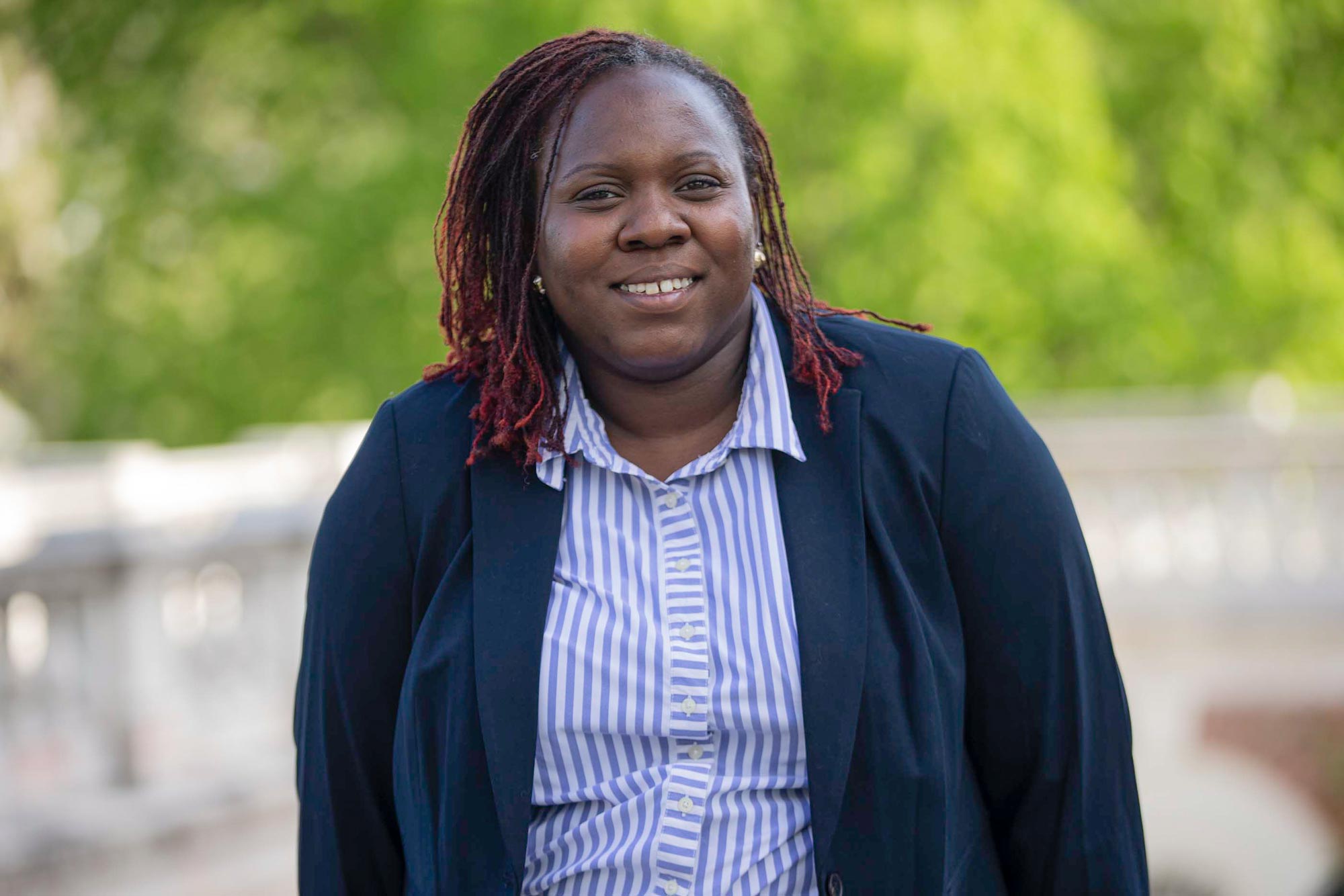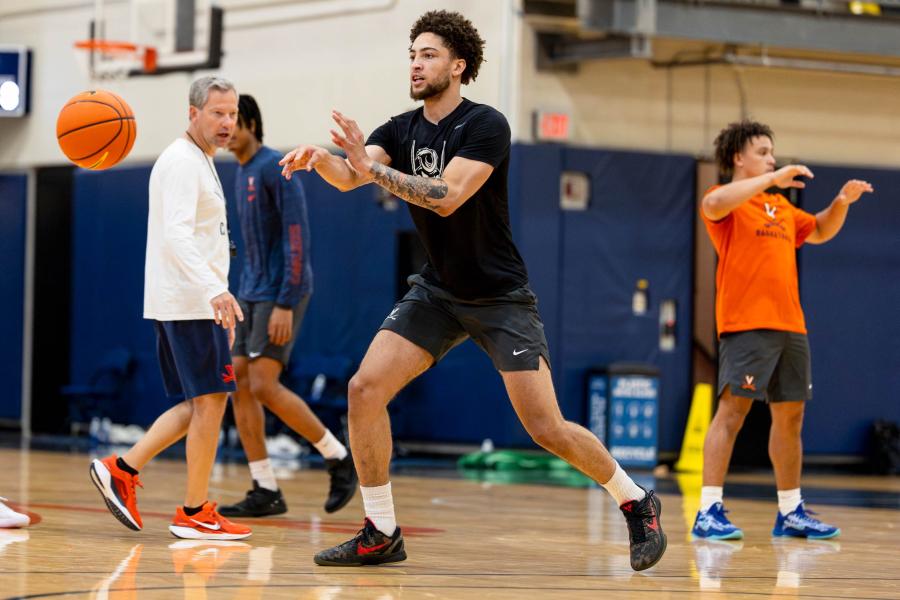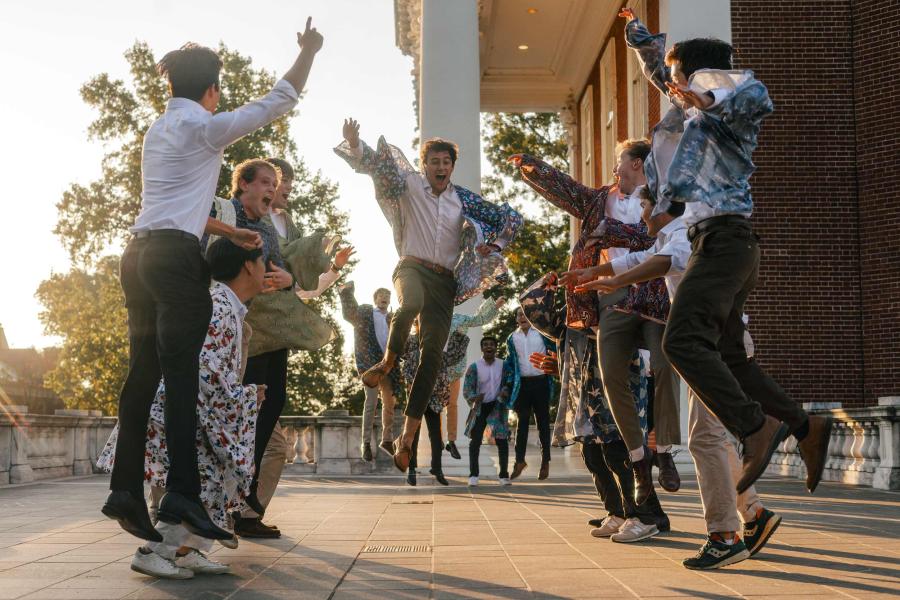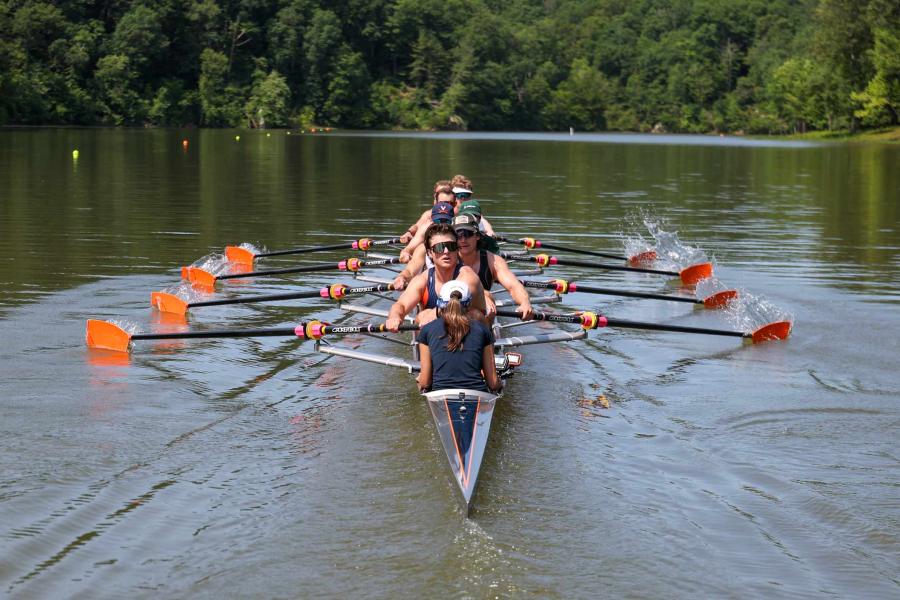When Army Reserve veteran Carla Hallman decided to go back to school, she knew she wanted to finish her college degree, but she did not know exactly where to go.
Turns out, she didn’t have to look far. Hallman, who along with her husband moved to Charlottesville on military orders years ago and decided to make the college town home, will graduate May 22 from the University of Virginia’s School of Continuing and Professional Studies’ Bachelor of Interdisciplinary Studies program.
She will be among the first in her family to graduate from college, one generation after her parents each emigrated from Barbados to Brooklyn, New York.
“I will be one of two of my mother’s children to graduate from college so far,” she said. “When my mom first moved here, she wanted to work as a lab scientist, but someone steered her away from it because she was an immigrant and they told her she would never do well in that job. They steered her away from education, so she really made it a priority for all of her children to learn.”
UVA’s bachelor’s program is particularly well-suited for adult students such as Hallman, who had completed some college credits during deployments with the Army Reserve, which she joined straight out of high school in 2004. After leaving the Army, Hallman opted to enter the working world instead of returning to school, building a successful career in human resources.
Now, she is a human resources manager at Farmington Country Club. She is also a leader in several community organizations, including the board of the Arc of the Piedmont, which serves people with intellectual and developmental disabilities, and the board of the Paramount Theater, where she chairs diversity, equity and inclusion efforts. She is a past president of the Junior League of Charlottesville.
Getting her degree, Hallman said, will be useful for her career and allow her to pursue the Society for Human Resources Management designation of senior certified professional, but it was also a much more personal goal.

“This was not necessarily for my career, though it is helpful,” she said. “I needed to do this for me.”
Hallman, who concentrated in liberal arts in the independent studies program, has loved her courses, especially those focused on writing, art and architecture.
“You can tell that our instructors are super passionate about what they are teaching us, and I really enjoyed the way they make you think about things,” she said. “They are really good at creating a dialogue.”
In one architecture course Hallman recalled, participants were tasked with finding examples of different types of architecture in their town. Hallman, her husband and their 4-year-old son piled into the family car and drove around Charlottesville. Looking for Corinthian columns, Hallman eschewed the obvious – the Lawn – and scrolled through Instagram, finding a local photographer who had snapped beautiful photos of buildings near the Downtown Mall. She sent the photographer a message, got an address, and the family was off. For another search, Hallman remembered the windows of a building she had once visited for her volunteer work. Now, she knew that type of window had a name and fit with a particular style of architecture.
“I am from low-income New York, I just thought it was a window,” she said, chuckling. “Now, I am much more aware of the architecture around me. I can name it, picture it and see why the architect might have chosen those things. I have really enjoyed learning those types of things.”
Her capstone project, “A Picture is Worth a Thousand Words,” delves into another form of art – Clip Art – and the subtle influence it can exert on how we think about diversity and inclusion.
“Clip Art can seem like it is just in the background of what we see or read, but it is made by people and used by people, so there is an implicit bias built in,” she said. “With technology as popular and widely used as it is, those biases can start to influence us from kindergarten onward.”
In addition to providing intellectual stimulation, Hallman felt like her professors succeeded in creating a strong sense of community, even though she entered the program in January 2020, mere weeks before the COVID-19 shutdown. Because the School of Continuing and Professional Studies already offered courses online, the transition was relatively smooth, she said, and professors were understanding when her son occasionally popped up on Zoom.
“SCPS ended up being the one consistent thing I had during COVID,” she said. “It was something I knew I could rely on, and they were always wonderful and accommodating.”
Hallman has also enjoyed the bonds she built with some of her classmates. They have texted each other about assignments and courses, swapped textbooks through the mail and generally supported each other, even from afar.
“Sometimes in online programs, you are on your own, just showing up and turning in your work,” she said. “But I felt like we really built camaraderie with the instructors and with each other.”
Now, Hallman is looking forward to walking the Lawn with some members of that group. She recently decorated her mortarboard, listing out titles she has held in the Army, in her career and in her volunteer work, while adding her next descriptor: “Graduate.”
Media Contact
Article Information
July 12, 2025






